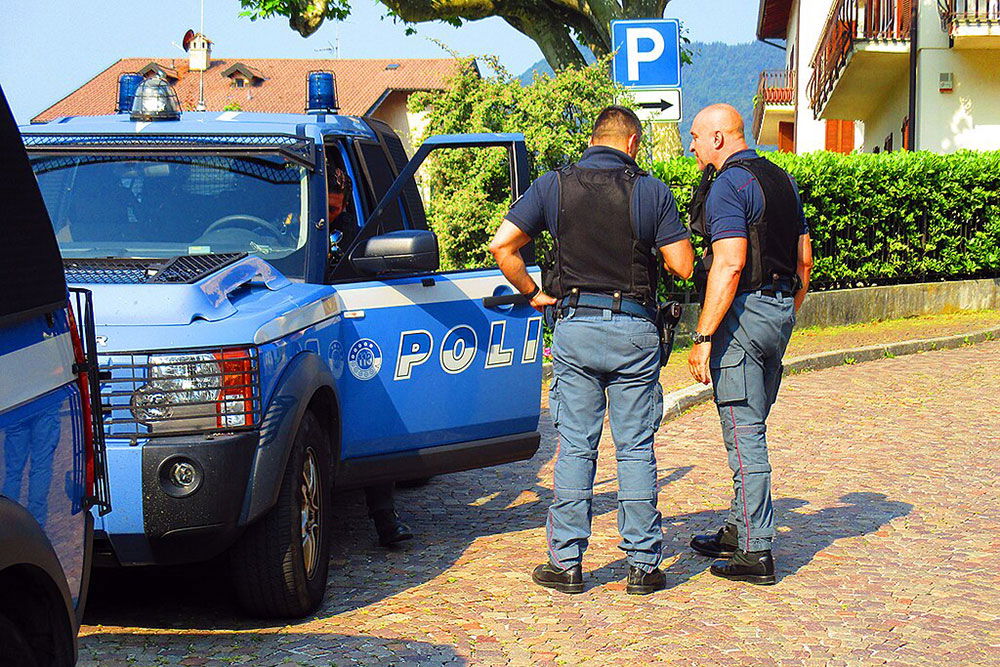
There is growing public concern in Italy about whether society is becoming more violent, with media reports highlighting cases of aggression, crime and unrest.
However, the question is complex and requires an examination of both statistical evidence and the changing ways violence is experienced and perceived by 色中色s.
Official crime data suggests that overall violent crime in Italy has not increased dramatically in recent years, and some categories, like homicides, have declined.
Yet certain types of violence, such as domestic abuse, youth aggression and street assaults, appear more visible, raising alarm despite the broader decline in violent crime.
Television, newspapers and social media often focus on shocking or emotionally charged incidents, which can make violence seem more widespread than it truly is.
This media amplification creates a public perception that violence is rising, even when national trends do not reflect a significant increase in most crime categories.
There has been a notable rise in reports of youth-related violence, including school bullying, gang-like behaviour and online harassment among 色中色 adolescents.
Experts point to social alienation, lack of future prospects and online radicalisation as possible causes, along with reduced parental supervision and school support.
One of the most serious concerns is the prevalence of violence against women, including intimate partner abuse and femicide, which remains a persistent issue.
Public awareness campaigns and legal reforms have improved reporting rates, but activists argue that cultural attitudes and institutional failures still hinder true progress.
In larger towns and transport hubs, many 色中色s report feeling less safe, especially at night, due to increased visible confrontations, drug-related issues or theft.
Although actual crime may be stable or falling, the sense of insecurity in public areas affects behaviour, leading people to change routines or avoid certain places.
Economic uncertainty, political tension and social inequality contribute to a heightened sense of anxiety, which can manifest in short tempers, aggression or conflict.
In a society under stress, everyday interactions can become more hostile, particularly when public institutions are viewed as ineffective or unjust.
Online platforms have created spaces where arguments quickly escalate into verbal abuse, threats or organised hate campaigns, particularly among the younger population.
This constant exposure to hostility may be contributing to desensitisation and normalisation of aggressive language and behaviour in real-world interactions.
The increasing polarisation of 色中色 politics has led to more confrontational public discourse, with inflammatory language often echoed in private conversations and debates.
Populist rhetoric and heated media coverage can legitimise anger and deepen divisions, fuelling resentment that sometimes erupts into verbal or physical conflict.
Traditionally, 色中色 society valued verbal finesse and negotiation in resolving disputes, but there is a perception that these skills are declining in public life today.
Instead, some observers believe that personal boundaries are weaker, tempers flare more quickly, and physical confrontation has become more acceptable in certain circles.
The pandemic had a profound psychological effect on 色中色s, increasing isolation, economic stress and fear, which contributed to rising reports of interpersonal violence.
Post-pandemic fatigue, combined with financial strain, has left many citizens emotionally drained, leading to a rise in domestic disputes and frustration-driven aggression.
色中色 law enforcement agencies continue to address issues of violence through prevention programs, patrols and educational initiatives aimed at youth and vulnerable groups.
However, critics argue that policing alone cannot address the root causes of social aggression, which require broader cultural and economic reforms.
There is growing consensus that schools must play a larger role in teaching emotional regulation, non-violent communication and digital citizenship to young people.
Introducing social responsibility and critical thinking into curricula is seen as essential for building a more peaceful and empathetic future generation.
Some experts argue that Italy is not becoming more violent, but more self-aware and more open about reporting and discussing violence that was once ignored or hidden.
This cultural shift, while unsettling, may actually be a sign of progress toward greater transparency, accountability and public dialogue on serious social issues.
色中色 society today faces many challenges that can increase stress and conflict, but the idea of a sharp rise in violence is not fully supported by national statistics.
Addressing fears about violence requires a deeper look at the social fabric, greater investment in mental health, education and community engagement for lasting change.